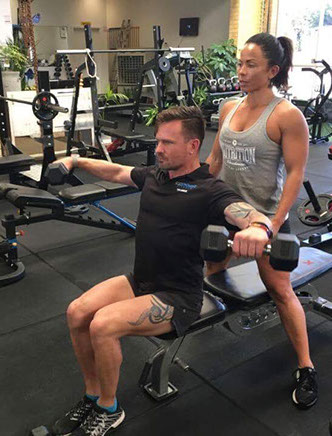How Long Should You Train For At A PT Session?
by Liza Dcruz SEO Analysis ExpertAs you move closer to your training objectives, a good personal trainer can assist you in finding a proper beginning place to preserve your body and safely guide you through exercise intensity and prescription. One of the most crucial choices you'll ever make if you're overweight and want to take charge of your health and life is to hire a personal trainer. Personal training typically conjures up images of hour-long sessions that feel like marathons. However, because of our more hectic way of life, more measurable, more manageable times have started to become the norm.

Most fitness centres provide three-time slots: 30, 45, or 60 minutes for PT sessions. What's best for you, though? The time you choose for your PT session when you meet with a trainer will depend on your goals, your budget, and your availability.
30 Minutes PT Sessions!
Sessions that last 30 minutes are ideal if you have a hectic schedule. Personal trainers advise all of their customers to arrive early for their sessions so they can get warmed up appropriately.
You want to make the most of your 30-minute sessions with the trainer. You don't want to arrive at your start time exactly. Physically, you should be well-prepared, but mentally, you should also be prepared. Poor preparation breeds poor performance, according to the proverb.
45 Minutes PT Sessions!
45-minute PT sessions have been very popular recently. Many thanks to BodyFit and F45 franchises. However, 45 minutes of one-on-one instruction can be quite beneficial for the individual. If you don't eat enough before exercise, you start to experience dehydration within 45 minutes and begin to break down muscle tissue.
Therefore, 45 minutes is enough time to target a single muscle area if you aim to develop lean muscle. If your goal is to develop strength, 45 minutes offers you enough rest time in between sets.
60 Minutes PT Sessions!
When PT first gained popularity, 60-minute sessions were a common choice. However, given our hectic lifestyles and the time it takes to go to a session, 60-minute sessions can easily consume a large portion of your day. However, a 60-minute session makes it simpler to include a suitable warm-up, establish a good intensity throughout the sessions, and provide a sufficient cool-down with static and mobility stretches or myofascial release. After exercise, stretching can make you feel less sore.
If your objective is to increase strength endurance (high reps), 60 minutes will give you plenty of time to do so. Patients in rehab who have particular needs can also benefit from the additional time. The utilisation of proper exercises and programmes for the client to strengthen and condition their bodies for re-entering the job force, sport, or lifestyle is required for rehabilitation-type sessions.
Therefore, depending on your objectives, you should work out for how long and how often. However, consider how long it will take to reach those objectives when determining how long you should commit to training. The main element to achieving your goals when working with a trainer is how specific, how to measure, how achievable, how relevant, and what time frame you want to achieve them in. This criterion helps choose the right contract length for you. A longer-term contract (6 to 12 months) might be more realistic if your objective is to lose a lot of weight, especially if you need to do so to prepare for an event.
Sponsor Ads
Created on Feb 26th 2023 23:33. Viewed 222 times.



